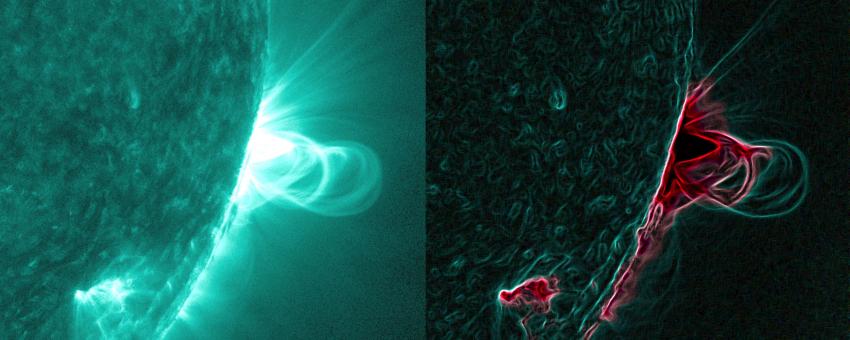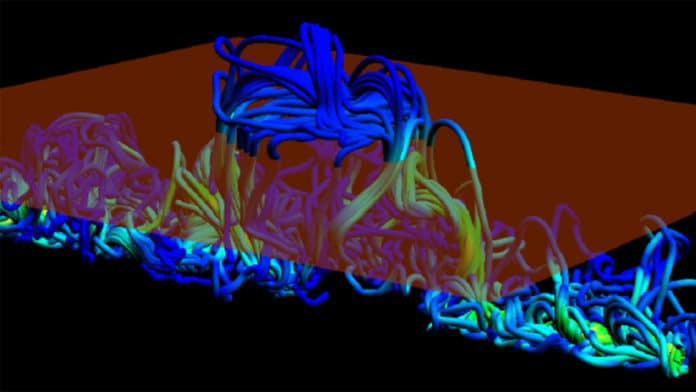According to scientists, solar activity results from instabilities in giant twists of magnetic ropes threading the Sun’s photosphere. Although, how these tangles form remains obscure, as there is no observational evidence.
In new work, Dr. Christopher Prior of the Department of Mathematical Sciences, Durham University, and colleagues have developed a new approach to analyzing the development of magnetic tangles on the Sun. Their work led to a breakthrough in a longstanding debate about how solar energy is injected into the solar atmosphere.
The study offers the first direct evidence that field lines become knotted before they emerge at the visible surface of the Sun.
By tacking the rotation of field lines at the points where they intersect with the photosphere, scientists were able to measure the entanglement of the Sun’s magnetic field.
Past studies have suggested that either coil of field lines emerge through the photosphere from the convection zone below or that the feet of arching field lines wrap around each other on the surface itself and create braids. However, both studies could theoretically produce effects like sunspot rotation and dramatic solar flares but, no direct observational evidence had conclusively supported either scenario.

Scientists noted, “Applying magnetic winding to observations of the photosphere and examining the resulting patterns could enable a definitive answer to be reached for which theory was correct.”
From recent observations from spacecraft, scientists studied the magnetic winding for ten active regions on the Sun. They found that the results matched the emergence theory of pre-twisted magnetic field lines rising from the convection zone.
Prior explains: “The pattern for pre-twisted field lines exactly matched the observational data we considered initially, and this has since been found to be true for all data sets of active regions we have looked at so far. We anticipate that magnetic winding will become a staple quantity in the interpretation of magnetic field structure from observational data.”
The work is presented at the virtual National Astronomy Meeting (NAM 2021).
